Sauna JJ Mud (JJ 머드한증막)
2.2Km 2019-01-16
18, Toegye-ro 56-gil, Jung-gu, Seoul-si
+82-2-2268-5561,+82-10-4372-2321
Ouvert il y a 12 ans, le sauna JJ Mud a largement contribué au développement du gommage traditionnel coréen et à la promotion de la boue de Boryeong de la province de Chuncheongnamdo. Il a même été sélectionné et nommé comme entreprise remarquable 3 années consécutives par la ville de Boryeong.
Daesungjip (대성집)
2.2Km 2021-03-27
5, Sajik-ro, Jongno-gu, Seoul
+82-2-735-4259
Daejungjip has specialized in Dogani tang (ox knee joint soup) for 60 years. Customers can feel a simple and familiar ambience at the restaurant.
The Restaurant (더레스토랑)
2.2Km 2021-03-27
54, Samcheong-ro, Jongno-gu, Seoul
+82-2-735-8441
It is a gallery-like restaurant where you can appreciate paintings drawn by famous artists. The best menu at this restaurant is spaghetti. This Western dishes restaurant is located in Jongno-gu, Seoul.
Baengnyeon Tojong Samgyetang (백년토종삼계탕)
2.2Km 2021-03-24
41, Bukchon-ro, Jongno-gu, Seoul
+82-2-747-5535
This is the place featured on the Michelin Guide. This Korean dishes restaurant is located in Jongno-gu, Seoul. The representative menu is ginseng chicken soup.
Seochon Guest House [Korea Quality] / 서촌 게스트하우스 [한국관광 품질인증]
2.2Km 2023-04-07
28-3, Jahamun-ro 7-gil, Jongno-gu, Seoul
+82-010-3345-9680
Seochon Guest House is located in Seochon, which is becoming a hot place for tourists in Seoul, and precisely on the road to Suseong Valley, whichis filled with interesting stores and is also well-known for Park Nosoo Art Gallery and the House of Yun Dong-ju (poet). Seochon Guest House is nicknamed ‘Jaeminangol (interesting village)’ after Baekseok’s poem ‘Yeowunangol’, with the aim of providing a visit full of interesting experiences. Passing through a garden and entering the main building, the unique charm of this hanok building, the staircase to get to the first floor from daecheong (main floored room), catches the eye of the visitors. In addition, the building is decorated with various stylish objects including paintings and Korean musical instruments. The terrace situated on the first floor offers an open view of the surrounding area including roof tiles of hanok structures and alleyways in Seochon. It is said that Korean novelist Yoon Hu-myeong also appreciated the structure of the guesthouse, saying, “It is an interesting place.” Built in the 1930s, the house, which has many storage places, was taken by the owner couple in spring 2014 as they were attracted by the house during their trip to Seochon. After the repair work, the ground floor of the house was opened for guests from January 2016, hoping that guests could share their daily experiences and stories with each other. The guestrooms and the main floored room on the ground floor are open to guests, with the exception of the first floor, which is used by the owner couple. The living room is equipped with books, a curved TV, and a table. The tasty meal, which is served in the kitchen, consists of rice and soup with six side dishes and is much loved by guests. The guesthouse offers a total of four rooms – Jae Room, which is the most Korean-style room; Mi Room, which has a combined style of a Korean-style room and Western-style room; Nan Room, which is an ideal room for meditation with a beautiful paper window; and Ahn Room, which is equipped with a veranda and a pretty flowerbed. Every room has its separate charm with various comfortable bedding to provide a quiet and cozy bedroom for guests in the middle of the city. Furthermore, the guesthouse holds a pansori (epic chant) performance twice a year. The owner started learning how to sing pansori to promote the Korean culture and tradition to foreigners. When a pansori performance is held, the owner offers traditional Korean snacks and drinks including sikhye (sweet rice punch), sujeonggwa (cinnamon punch), traditional sweets and cookies, and tteok (rice cakes) to visitors, tourists, and performers. Moreover, it provides cultural programs such as a Gukak (Korean classical music) experience, Korean traditional clothes experience, and making Korean food experience, as well as other activities with guests, such as trip to the city wall between Inwangsan Mountain and Bugaksan Mountain, and the Royal Palace Tour to Gyeongbokgung Palace, etc., as well as a trip to a traditional market.
La rue de jokbal à Jangchungdong (장충동 족발 골목)
2.2Km 2019-09-26
176, Jangchungdan-ro, Jung-gu, Seoul-si
+82-2-2236-9135
Le phénomène de la rue de jokbal à Jangchungdong a commencé il y a 50 ans avec l’ouverture de deux restaurants de jokbal coréens (pieds de porc cuits à la vapeur), suivis par un afflux de nouveaux restaurants de jokbal durant la fin des années 70 et début des années 80. Aujourd’hui les restaurants de jokbal continuent de servir un des délices coréens les plus appréciés sur la route principale et les allées des environs de la rue Jangchungdong 1(il)-ga.
Seongsim Arts & Crafts (청원산방-성심예공원)
2.2Km 2019-10-02
27, Bukchon-ro 6-gil, Jongno-gu, Seoul-si
+82-2-715-3342
Créé en 1981 à Samcheong-dong, Seongsim Yeogongwon est un studio d’art établi par Sim Yong-sik, qui a été désigné trésor culturel immatériel par la ville de Séoul. Il travaille sur diverses fenêtres et portes traditionnelles avec ses étudiants, et en fait la promotion en Corée et dans d’autres pays. Dans la terminologie des Hanoks, le « daemokjang » désigne la charpente de base d’une maison, alors que le « somokjang » se réfère aux portes, fenêtres et autres qui ajoutent quelque chose à la charpente. On trouve des portes et des fenêtres magnifiquement décorés partout dans la maison Seongsim Arts & Crafts : des portes qui peuvent être pendues au mur, des fenêtres décorées de fleurs de cerisier, des fenêtres en forme de peigne, et bien d’autres.
Les visiteurs peuvent également admirer de très belles oeuvres d’art à l’occasion de diverses expositions organisées à Seongsim Yegongwon. L’entrée est gratuite.
Musée mondial de la joaillerie (세계장신구박물관)
2.2Km 2024-12-12
2, Bukchon-ro 5na-gil, Jongno-gu, Seoul-si
+82-2-730-1610
Le musée mondial de la joaillerie se situe dans une ruelle du quartier Samcheong-dong, à l’est du palais Gyeongbokgung, où sont regroupés de nombreux musées et galeries d’art.
Le directeur du musée a collectionné environ 3 000 pièces dans une soixantaine de pays pendant 30 ans, et il en a exposé environ mille ici.Le rez-de-chaussée se compose d’un mur d’ambre reflétant les 5 000 ans de l’histoire de la Terre, de la Chambre Eldorado revêtue d’or qui a fasciné les européens du XVIème siècle, de la salle des colliers mettant en valeur les techniques somptueuses, de la salle du crucifix qui crée une atmosphère paisible et calme.
Au premier étage se trouvent le mur de bagues et celui de masques qui vous inviteront à la méditation, la salle d’ivoire et de perles agencée de manière à découvrir la beauté de l’art de la décoration intérieure, et la salle dédiée aux parures modernes.
Fat Grandma's Place (뚱뚱이할머니집)
2.2Km 2016-09-05
174-1, Jangchungdan-ro, Jung-gu, Seoul-si
+82-2-2273-5320 / 2279-2714
An elderly lady with fine wrinkles is still in charge of creating the captivating taste of jokbal (steamed pork hock). Originally, the restaurant did not have a name, but customers referred to it as the “Fat Grandma’s Place.” Sure enough, as you enter the restaurant, you will notice a plump, elderly lady with silver hair sitting at the counter. The place is well known for jokbal with an exquisite combination of rich meat and soft fat. Three or four ingredients, including ginger, are added to the simmering broth to eliminate the strong meat smell. When you order a small serving, you are served radish “water” kimchi as well as two small bindaetteok free. You can order additional bindaetteok too, three for 5,000 won. When you order a large serving, you are served four free bindaetteok. Many customers order jaengbanguksu (spicy buckwheat noodles), which goes perfectly with jokbal.
Wonjo 1ho Jangchungdong Halmeonijip(원조1호장충동할머니집)
2.2Km 2020-11-17
174, Jangchungdan-ro, Jung-gu, Seoul
+82-2-2279-9979, +82-2-2275-1064
Following his mother’s footsteps, the son of the previous owner is now managing the family business. Opened during the early years of Jokbal Street, the delicious meat at this restaurant is fondly remembered by customers. While the meat itself has almost no fat, the fat portion is extremely soft and savory. This restaurant is also different from the others in that it provides kongnamul-guk (bean sprout soup) with the jokbal (steamed pork hock). Pyeongyang-style naengmyeon (cold noodles) and tteok-mandu-guk (rice cake-dumpling soup) are also delicious. Pyeongyang naengmyeon is cooked to suit South Korean tastebuds. Besides, the noodles and dumplings are hand-made. Despite the restaurants long history, the building of the restaurant is clean and well-maintained as it was being rebuilt after a fire in the 1980s. There are plenty of tables on the first and second floors to accommodate customers, and the third floor is reserved for large groups. Especially noticeable is the clean appearance both inside and out, despite the restaurant’s long history; probably because the building was rebuilt after a fire in the 1980s. Plenty of tables on the first and second floors accommodate customers, and the third floor is reserved for large groups.

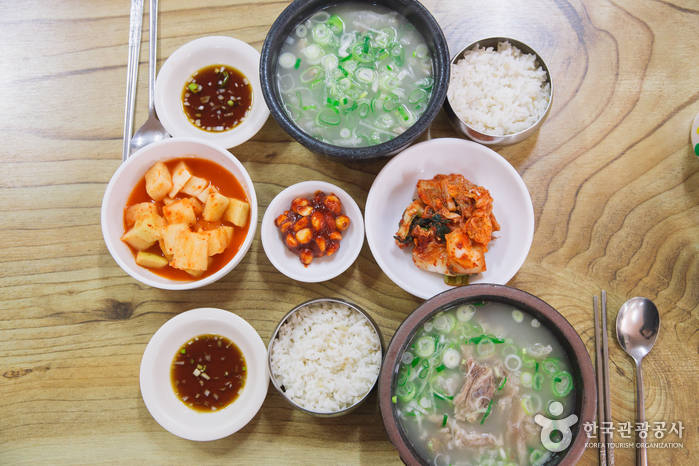
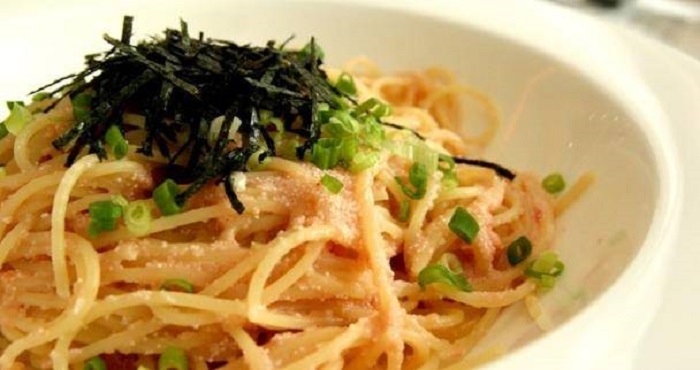
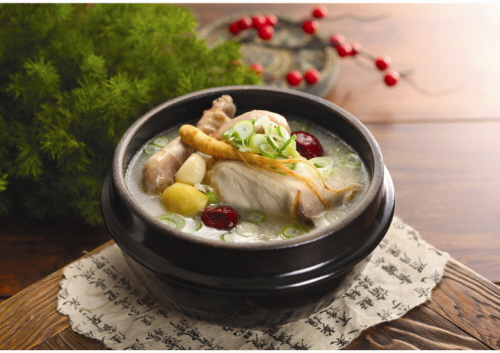
![Seochon Guest House [Korea Quality] / 서촌 게스트하우스 [한국관광 품질인증]](http://tong.visitkorea.or.kr/cms/resource/41/2447241_image2_1.jpg)
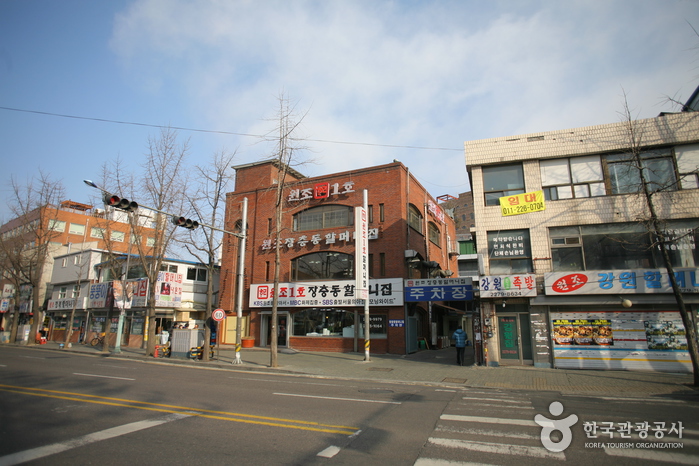
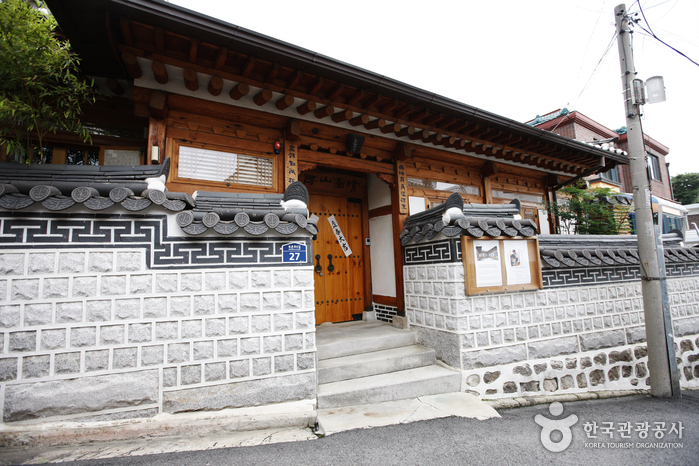
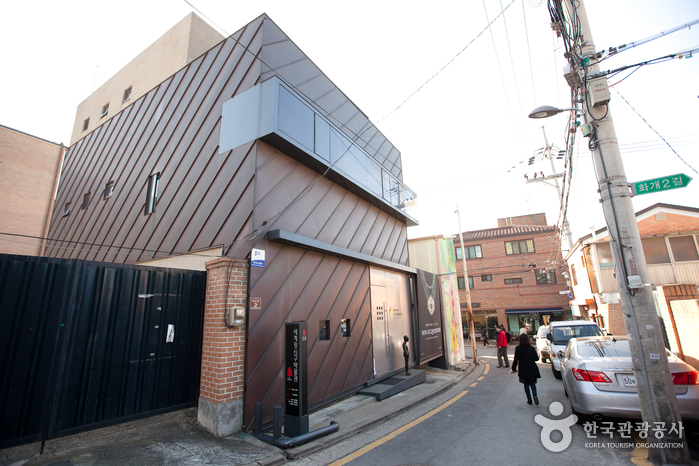
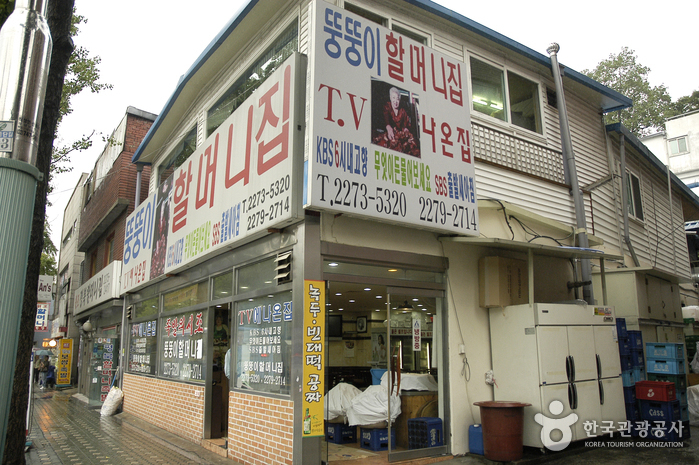
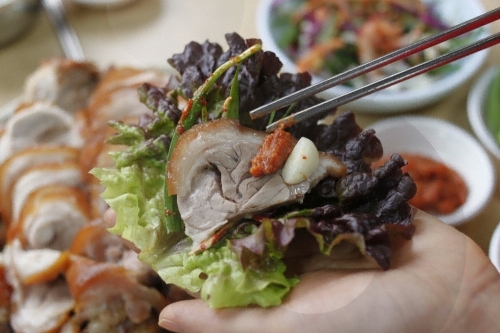
 Français
Français
 한국어
한국어 English
English 日本語
日本語 中文(简体)
中文(简体) Deutsch
Deutsch Español
Español Русский
Русский